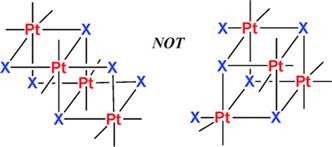DNA as a template for the synthesis of chemical compounds
Advertisement
Nature's tools are best. That's what David R. Liu and his team at Harvard University believe, in any case; they are blazing new trails in the search for pharmaceuticals and the synthesis of new compounds. The team couples reagents to deoxyribonucleic acid (DNA) and uses the unique ability of this genetic molecule to carry information.
It goes like this: a molecule is bound to the end of a long single strand of DNA -- the template. The researchers couple the desired reaction partner to the end of a short DNA fragment, which is complementary to a sequence in the template, to which it binds. The two reactants are thus forced into such proximity that reactions can occur between partners that will normally not have anything to do with each other.
If a compound with special properties, such as a pharmaceutical agent, is required, the starting molecule is coupled to a large number of randomly generated templates with correspondingly varied sequences. In the next reaction step, a whole swarm of different reagents can be set loose, each coupled to a different -- precisely defined -- short DNA fragment. With high probability, most of these fragments will find their complementary sequences on one of the templates and will bind to it. Hundreds or thousands of different compounds can thus simultaneously be synthesized in the same reaction vessel. If a drug candidate is found in the mixture, simply sequencing its DNA reveals its identity. The catch is this: there are certain types of reactions that only proceed if both reactants are right next to each other -- such that the template sequence matching the DNA fragment must be right next to the bound molecule. If the fragment binds farther away, no reaction takes place. Liu and his co-workers have found an elegant solution to this; all templates have a small, standard sequence fragment attached to the end to which the molecule is bound. In addition, the reagent-bound end of each of the DNA fragments begins with the corresponding complementary sequence. When there is a match, the fragment thus binds to the template with both ends. The unpaired section in the middle forms a loop reminiscent of the Greek letter omega. This structure is thus known as the omega-form.
The chemists had another clever idea as well; rather than binding the molecule to the end of the template, it can be attached in the middle. Two DNA fragments can thus dock simultaneously, one on either side -- this is the T-form. It is thus possible to carry out novel reactions with three partners.
Other news from the department science
Most read news
More news from our other portals
See the theme worlds for related content
Topic world Synthesis
Chemical synthesis is at the heart of modern chemistry and enables the targeted production of molecules with specific properties. By combining starting materials in defined reaction conditions, chemists can create a wide range of compounds, from simple molecules to complex active ingredients.

Topic world Synthesis
Chemical synthesis is at the heart of modern chemistry and enables the targeted production of molecules with specific properties. By combining starting materials in defined reaction conditions, chemists can create a wide range of compounds, from simple molecules to complex active ingredients.

































































